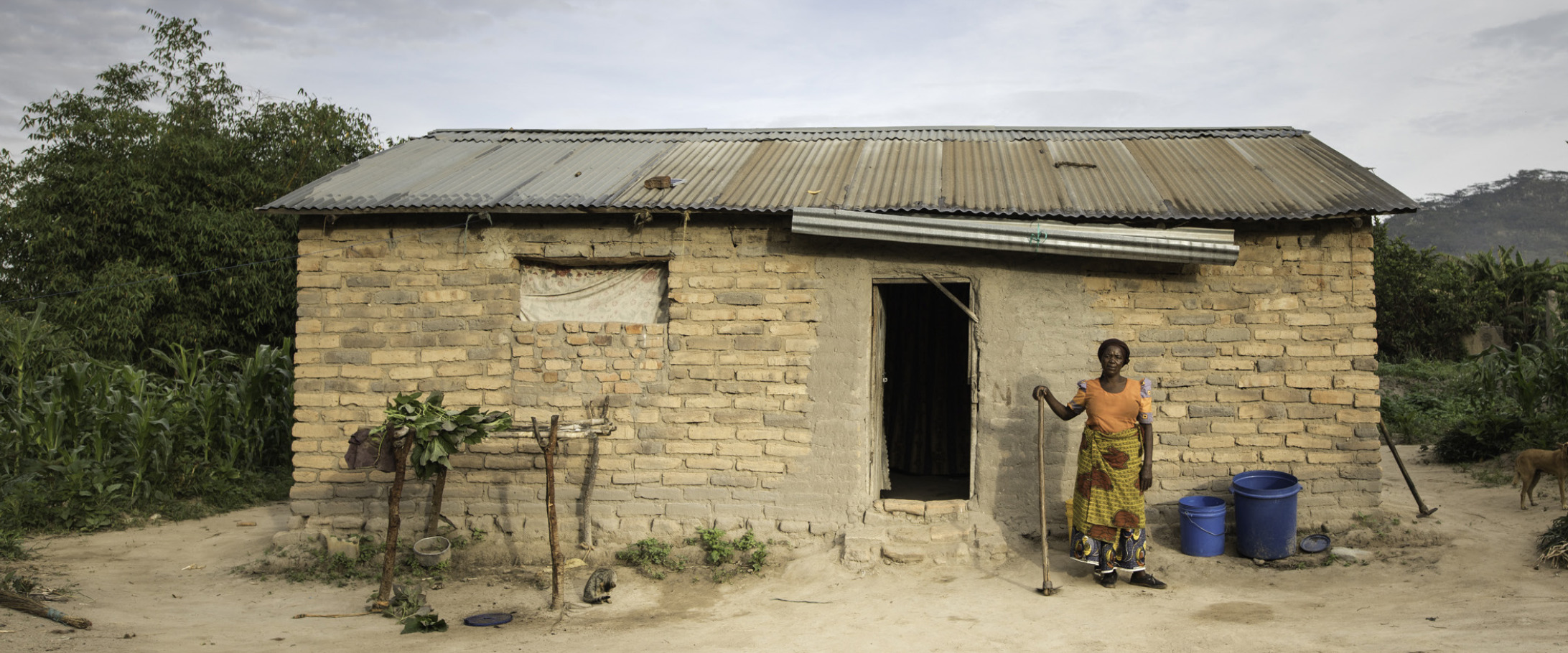[vc_row][vc_column width=”1/2″][vc_column_text]
Myanmar’s rapid transformation presents an opportunity to address poverty and social and gender injustice.
Following a history of turbulent internal conflict, the resource-rich country has begun making great strides, foreign direct investment is increasing and efforts are being made to improve the lives of the Myanmar people. However, challenges remain. Myanmar continues to be one of the poorest countries in South-East Asia with approximately one-quarter of the population living below the poverty line.
The fast-paced rate of change offers an opportunity to address the development challenges faced by Myanmar but also risks further marginalising poor and vulnerable individuals. CARE is working closely with some of the country’s most affected women and girls and their communities to help provide tools for sustainable change.[/vc_column_text][/vc_column][vc_column width=”1/2″][vc_column_text css=”.vc_custom_1513730366006{padding-top: 5px !important;padding-right: 20px !important;padding-bottom: 10px !important;padding-left: 20px !important;background-color: #eaeaea !important;}”]
Fast Facts
Population: 55.1 million (July 2017 est.)
Life expectancy: 68.2 years (66.6 years male, 69.9 years female) (2017 est.)
Infant mortality: 35.8 deaths/1,000 live births (2017 est.)
Under-5 mortality*: 50 deaths/1,000 live births (2015 est.)
Maternal mortality: 178 deaths/100,000 live births (2015 est.)
Adult literacy rate: 75.6% (80% male, 71.8% female) (2016 est.)
Access to improved drinking water: 80.6% (92.7% urban, 74.4% rural)
Access to improved sanitation: 77.4% (84.3% urban, 73.9% rural)
Labour force participation rate^: 82% male, 75% female (2014 est.)
Percentage of seats held by women in national parliament^: 10%
GDP per capita: $5,500 (2015 est.)
Source: CIA World Factbook, *UNICEF, ^World Bank[/vc_column_text][/vc_column][/vc_row][vc_row][vc_column][/vc_column][/vc_row][vc_row][vc_column width=”2/3″][vc_column_text]
Current emergency: Myanmar-Bangladesh Crisis
More than 620,000 people have fled their homes in Myanmar’s Rakhine State following violent conflict, escaping to Bangladesh where they are now living in improvised refugee camps.
CARE’s response
CARE has so far reached more than 130,000 refugees in Bangladesh with lifesaving food and relief items. Our teams are also supporting those affected by violence. Learn more about the Myanmar-Bangladesh Crisis.[/vc_column_text][/vc_column][vc_column width=”1/3″][vc_column_text]
[care_donation_form one_off_fund_code=”YDGGEN” one_off_appeal_code=”YDGCtryOnl” monthly_fund_code=”YDGIAP” monthly_appeal_code=”YDGIAP” donation_title=”Donate now” donation_subtitle=”Your ${donation_amount} will go a long way” form_mode=”both” dollar_handles=”100|149|Other” monthly_dollar_handles=”50|100|Other” hide_phone_field=”no” tandc_link=”https://dev.care.org.au/direct-debit/” tandc_text=”View CARE Australia’s Direct Debit Service Agreement” /]
[/vc_column_text][/vc_column][/vc_row][vc_row][vc_column width=”1/2″][vc_column_text]
Over 20 years of CARE in Myanmar
CARE has worked in Myanmar since 1995 with the aim of improving peoples lives through the empowerment of women and girls and their communities. Originally focusing on health-related activities, the scope of CARE’s work has since increased to cover five priority sectors; Food Security and Livelihoods, Maternal and Sexual Reproductive Health, Gender-Based Violence, Disaster Risk Reduction, Peace-Building and Policy and Law Reform.
CARE currently focuses on supporting particularly vulnerable and marginalised groups. We recognise that the key to achieving equitable development outcomes lies in shifting deeply rooted, structural underlying causes of poverty and social and gender injustice which contribute to increasing the exclusion and vulnerability of marginalised groups in society. Putting women at the centre of our work, CARE Myanmar’s long-term programs focus on significant and lasting change for two impact groups; Vulnerable Rural Women (VRW) and Socially Marginalised People (SMP).[/vc_column_text][/vc_column][vc_column width=”1/2″][vc_single_image image=”25044″ img_size=”large”][/vc_column][/vc_row][vc_row][vc_column width=”1/2″][vc_single_image image=”6523″ img_size=”large” alignment=”center” include_caption=”yes”][/vc_column][vc_column width=”1/2″][vc_column_text]
Socially marginalised people
The SMP Program aims to support socially marginalised people in urban settings who experience multiple forms of exclusion including an inability to access safe employment and have a legitimate voice in the workplace. The SMP Program is based in Myanmar’s large urban centres and works with female migrants, sex workers, people who inject drugs, people living with HIV and sexual minorities. It has a focus on safe employment for these groups and includes a focus on policy reform in areas such as labour law and violence against women. The SMP program is currently made-up of 5 projects being implemented across Myanmar.[/vc_column_text][/vc_column][/vc_row][vc_row][vc_column width=”1/2″][vc_column_text]
Vulnerable rural women
The VRW Program focuses on particularly vulnerable rural women who experience multiple disadvantages associated with poverty, gender, exclusion, adverse effects of long-standing economic challenges, changing local economies and conflict dynamics.
The projects within the VRW program seek to address the problems faced by vulnerable rural women by focusing on increasing livelihood strategies, improving women’s participation in decision-making, strengthening local organisations and institutions and raising awareness of the role of women in the household and community.[/vc_column_text][/vc_column][vc_column width=”1/2″][vc_single_image image=”6524″ img_size=”large” alignment=”center” include_caption=”yes”][/vc_column][/vc_row][vc_row][vc_column width=”1/2″][vc_single_image image=”24770″ img_size=”large” include_caption=”yes”][/vc_column][vc_column width=”1/2″][vc_column_text]
Humanitarian and Emergency Response
In addition to the VRW and SMP programs, we also provide emergency and humanitarian response in times of crisis. CARE typically responds in geographic areas where we have an operational presence or elsewhere when there is a shortage in capacity. Key areas include water, sanitation and hygiene (WASH), shelter and food security.[/vc_column_text][/vc_column][/vc_row][vc_row][vc_column][vc_column_text]
Learn more about our ongoing impact in Myanmar:
[/vc_column_text][vc_row_inner][vc_column_inner width=”1/4″][vc_single_image image=”7297″ img_size=”360×239″ onclick=”custom_link” link=”https://dev.care.org.au/blog/self-help-and-community-acceptance-in-myanmar/”][vc_column_text]Self-help and community acceptance in Myanmar[/vc_column_text][/vc_column_inner][vc_column_inner width=”1/4″][vc_single_image image=”8088″ img_size=”360×239″ onclick=”custom_link” link=”https://dev.care.org.au/blog/supporting-people-living-hiv-aids-myanmar/”][vc_column_text]Supporting people living with HIV and AIDS[/vc_column_text][/vc_column_inner][vc_column_inner width=”1/4″][vc_single_image image=”24683″ img_size=”360×239″ onclick=”custom_link” link=”https://dev.care.org.au/blog/an-all-too-common-horror/”][vc_column_text]“An all too common horror”[/vc_column_text][/vc_column_inner][vc_column_inner width=”1/4″][/vc_column_inner][/vc_row_inner][vc_column_text]– More CARE evaluation reports from Bangladesh and other countries are available at CARE’s Electronic Evaluation Library.[/vc_column_text][/vc_column][/vc_row][vc_row][vc_column][care_linkeddocuments numberposts=”4″ maintitle=”Other resources and highlights:”][/vc_column][/vc_row][vc_row][vc_column][vc_column_text]The on-going work we do in Myanmar is in partnership with these local organisations: Business Kind Myanmar, Kayah State Women’s Network, Legal Clinic Myanmar, Marie Stopes, Ministry of Agriculture, Ministry of Health, Myanmar Nurses and Midwives Association, Myanmar Rubber Producers and Planters Association, My Jobs, Pyoe Pyin, and Sex Worker in Myanmar Network.[/vc_column_text][/vc_column][/vc_row][vc_row][vc_column][vc_column_text]
Banner image ©Tom Greenwood/CARE
[1] 2014 Myanmar Population and Housing Census: Thematic Report on Population Dynamics,
Department of Population Ministry of Immigration and Population of Myanmar, 2016.
[/vc_column_text][/vc_column][/vc_row]
